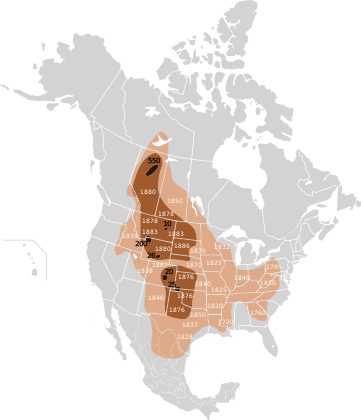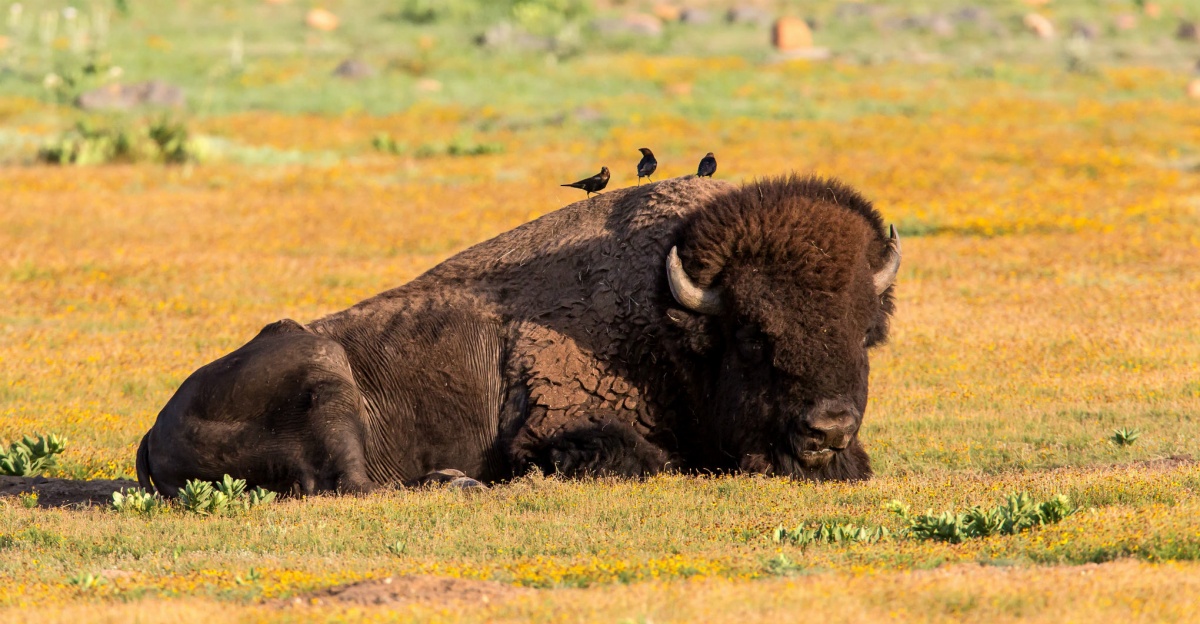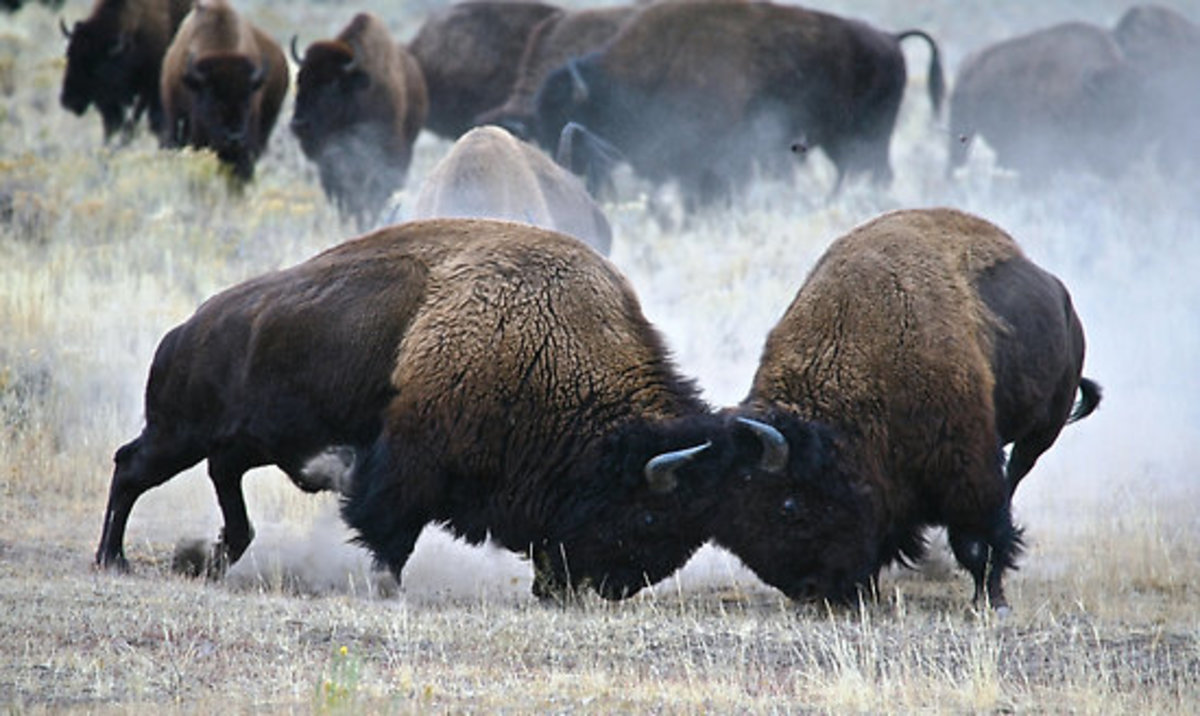STATUS
Near Threatened


These creatures look somewhat like a large cow, and are in the same family, Bovidae. They have thick brown coats that shed during the summer. Males are somewhat larger than females, tending to weigh quite a bit more. Both sexes do, however, possess horns atop their large heads, unlike some members of the Bovidae family. These horns are short, and curve upwards away from the face.
This species is most commonly found on open plains. They also frequent river valleys, grasslands, semiarid lands, and prairies. In the past these creatures have also inhabited semi-wooded areas, but they are not frequently found in wooded areas currently. Some will also roam into foothills and mountainous areas, though they are not considered to be high-altitude creatures.
Bison are herbivorous mammals, which means that they feed primarily on plants. They are mostly grazers that eat grasses and sedges rather than searching for fruit or other plants. This means that during the winter food can be hard to come by as it gets blanketed in snow. When snow covers the grasses, these massive creatures use their muscular necks to scrape down to the buried food below.

STATUS
Near Threatened

SCIENTIFIC NAME
Bison bison

POPULATION
Only 4,500 left

LENGTH
about 2.8 metres

WEIGHT
460 and 990 kilograms

HABITAT
PLAIN GRASSLANDS

Bison is a keystone species, help create habitat on the Great Plains for many different species, including grassland birds and even many plant species. As bison forage, they aerate the soil with their hooves, which aids in plant growth, and disperse native seeds, helping to maintain a healthy and balanced ecosystem.
The species' dramatic decline was the result of habitat loss due to the expansion of ranching and farming in western North America
These large mammals are both a religious symbol and sacred animal to the Native Americans, and they are used in a number of religious ceremonies.
This species is extremely social and largely diurnal. This means that they are most active during the day. Vast herds can accumulate, especially during migrations. During the summer, these creatures will exhibit short, daily migrations from sleeping grounds to feeding grounds.
When hunting bison, Native Americans would utilize the entire animal. Meat, hides, and bones were incredibly important as food, clothing, teepees, and tools.




